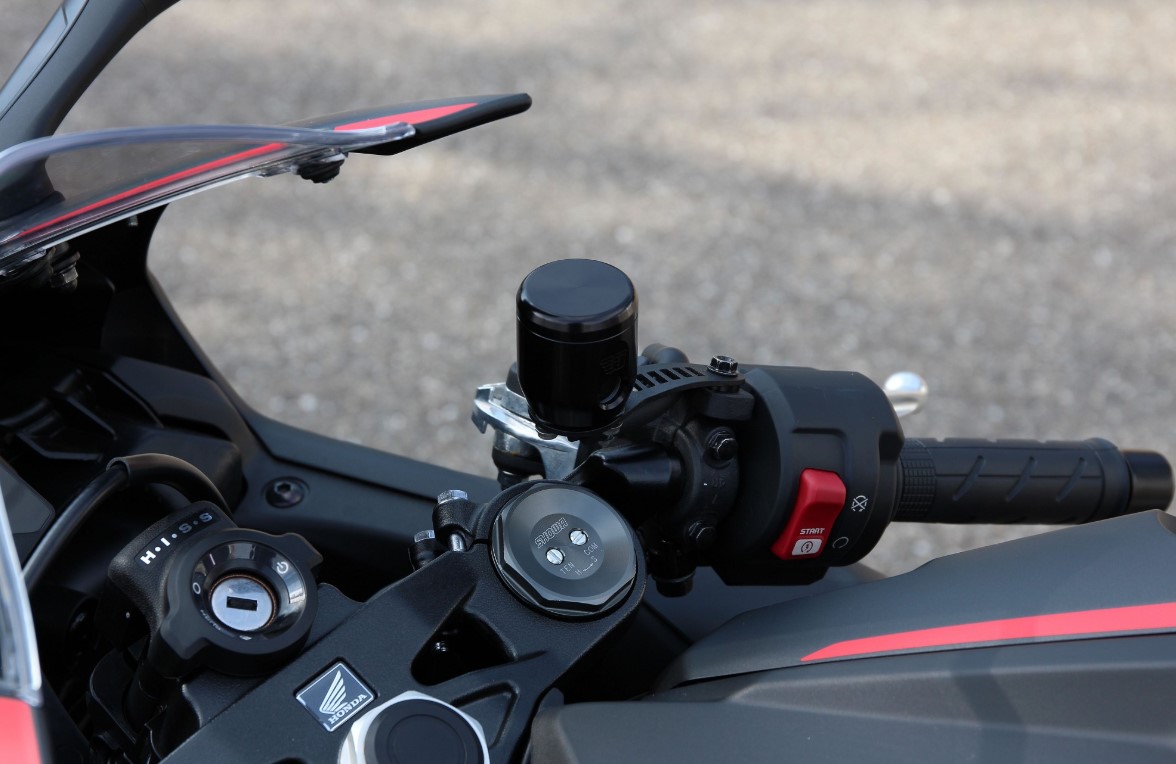Bad breaks are bad news. Your motorcycle safety depends largely on having responsive brakes. If your brakes are going out or less effective than you’d like, it’s time to check out your brake fluid. Here’s a basic guide to signs you need to change your brake fluid, how to change it and where to find the best motorcycle brake fluid.
When to Replace Your Brake Fluid
When was the last time your replaced your brake fluid? If you want to avoid sudden brake failure, most manufacturers recommend replacing your brake fluid every two years. Unfortunately, few riders actually follow this recommendation.
The danger in using old brake fluid is that you may not receive enough warning that it’s time to replace it. Because your brake fluid is glycol based and hygroscopic, any moisture can cause it to have a lower boiling point and reduce efficiency in warm temperatures. Too much moisture and your brakes will start to feel squishy and dramatically increase your stopping time. That’s bad news for riders everywhere. Follow these steps and schedule a brake fluid change every two years.
Collect Your Tools
If you’re used to installing aftermarket and OEM motorcycle parts, you probably already have all the tools you need. Grab a few clean rags, screwdriver, wrench, bleeder hose and a container. Consult your owner’s manual for the best brake fluid for your bike and get ready to get started.
Bleed Your Brakes
First, cover up your bike with a few rags. While the hose and bucket are designed to catch most of the brake fluid, be prepared for a little mess. This corrosive liquid doesn’t treat your bike’s paint very nicely, so keep it protected. Here are the steps to removing your old brake fluid:
Remove the master cylinder reservoir cap.
Remove the diaphragm and backing plate.
Attach the hose to the bleeder bolt and slowly loosen it.
Pump your brakes to force your brake fluid out through the hose.
Repeat until all the fluid is out.
Fill the Reservoir
Once your old fluid is out, it’s time to tighten the bleeder bolt and add all your new fluid. Fill up the reservoir completely with your new fluid. Before you fire up your bike, you’ll need to ensure your brakes are pressurized and there’s no air in the system.
Do this by slightly opening the bleeder bolt and pumping your brakes. Initially, you should only be forcing air out. Soon you’ll start to see some of your new brake fluid being discharged. Keep pumping until all the air bubbles are out. Tighten your bleeder bolt, top off your reservoir and get ready to ride.
Clean Up
Be cautious as you first start up your bike. Take it slow around your driveway as you test out your new brakes. Improper pressurization could leave you without brakes, so don’t go flying out of the driveway on your first ride with your new brake fluid.
Shop online for all your premium brake fluid, OEM motorcycle fairings and any other OEM or aftermarket maintenance needs. Whether you’re just looking to keep your bike safe or shopping for premium ways to personalize your ride, enjoy a wide range of brands and affordable prices online.
This article does not necessarily reflect the opinions of the editors or management of EconoTimes.



 JD.com Pledges 22 Billion Yuan Housing Support for Couriers as China’s Instant Retail Competition Heats Up
JD.com Pledges 22 Billion Yuan Housing Support for Couriers as China’s Instant Retail Competition Heats Up  Intel’s Testing of China-Linked Chipmaking Tools Raises U.S. National Security Concerns
Intel’s Testing of China-Linked Chipmaking Tools Raises U.S. National Security Concerns  Air Force One Delivery Delayed to 2028 as Boeing Faces Rising Costs
Air Force One Delivery Delayed to 2028 as Boeing Faces Rising Costs  SpaceX Begins IPO Preparations as Wall Street Banks Line Up for Advisory Roles
SpaceX Begins IPO Preparations as Wall Street Banks Line Up for Advisory Roles  Coca-Cola’s Proposed Sale of Costa Coffee Faces Uncertainty Amid Price Dispute
Coca-Cola’s Proposed Sale of Costa Coffee Faces Uncertainty Amid Price Dispute  Strategy Retains Nasdaq 100 Spot Amid Growing Scrutiny of Bitcoin Treasury Model
Strategy Retains Nasdaq 100 Spot Amid Growing Scrutiny of Bitcoin Treasury Model  Rio Tinto Signs Interim Agreement With Yinhawangka Aboriginal Group Over Pilbara Mining Operations
Rio Tinto Signs Interim Agreement With Yinhawangka Aboriginal Group Over Pilbara Mining Operations  California Jury Awards $40 Million in Johnson & Johnson Talc Cancer Lawsuit
California Jury Awards $40 Million in Johnson & Johnson Talc Cancer Lawsuit  SoftBank Eyes Switch Inc as It Pushes Deeper Into AI Data Center Expansion
SoftBank Eyes Switch Inc as It Pushes Deeper Into AI Data Center Expansion  Fortescue Expands Copper Portfolio With Full Takeover of Alta Copper
Fortescue Expands Copper Portfolio With Full Takeover of Alta Copper  United Airlines Tokyo-Bound Flight Returns to Dulles After Engine Failure
United Airlines Tokyo-Bound Flight Returns to Dulles After Engine Failure  CMOC to Acquire Equinox Gold’s Brazilian Mines in $1 Billion Deal to Expand Precious Metals Portfolio
CMOC to Acquire Equinox Gold’s Brazilian Mines in $1 Billion Deal to Expand Precious Metals Portfolio  Korea Zinc Plans $6.78 Billion U.S. Smelter Investment With Government Partnership
Korea Zinc Plans $6.78 Billion U.S. Smelter Investment With Government Partnership  Nomura Expands Alternative Assets Strategy With Focus on Private Debt Acquisitions
Nomura Expands Alternative Assets Strategy With Focus on Private Debt Acquisitions  SK Hynix Considers U.S. ADR Listing to Boost Shareholder Value Amid Rising AI Chip Demand
SK Hynix Considers U.S. ADR Listing to Boost Shareholder Value Amid Rising AI Chip Demand  United Airlines Flight to Tokyo Returns to Dulles After Engine Failure During Takeoff
United Airlines Flight to Tokyo Returns to Dulles After Engine Failure During Takeoff  Azul Airlines Wins Court Approval for $2 Billion Debt Restructuring and New Capital Raise
Azul Airlines Wins Court Approval for $2 Billion Debt Restructuring and New Capital Raise 































